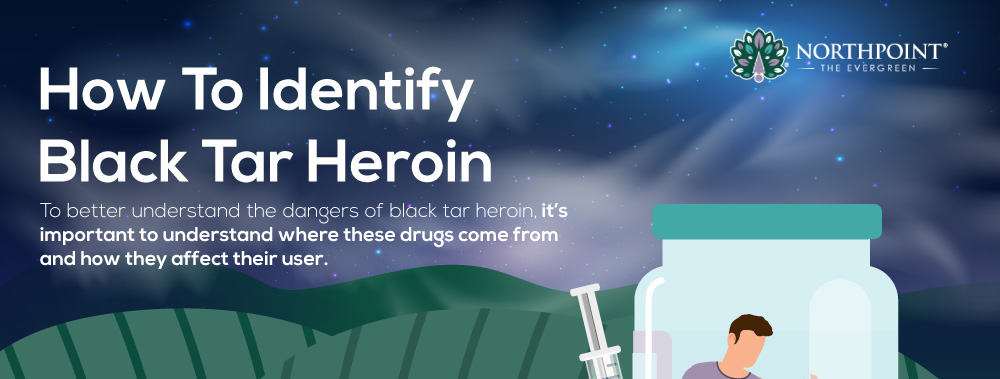 Heroin, in all its forms, is an extremely potent and addictive opioid drug that can take priority over every aspect of a user’s life. The blame for the “opioid epidemic” is typically placed on the careless prescription of opioid painkillers, but heroin remains a significant issue for communities across the United States.
Heroin, in all its forms, is an extremely potent and addictive opioid drug that can take priority over every aspect of a user’s life. The blame for the “opioid epidemic” is typically placed on the careless prescription of opioid painkillers, but heroin remains a significant issue for communities across the United States. 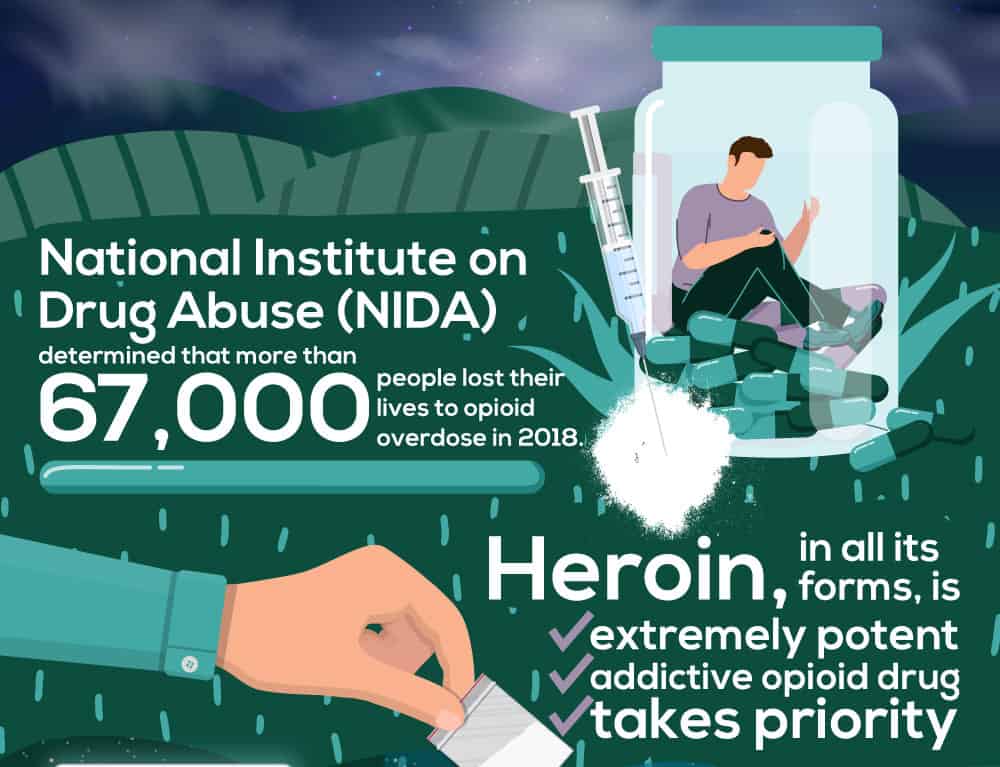 To support the need for heroin education and treatment options, the National Institute on Drug Abuse (NIDA) determined that more than 67,000 people lost their lives to opioid overdose in 2018. This statistic includes both prescription opioids and heroin. The difference between prescription opioids and heroin is that prescription opioids have legitimate medical uses for pain management, while heroin is produced illegally strictly for its intoxicating effects. Because of the illicit nature of heroin, the user may never know exactly what they’re ingesting into their body. Illegal heroin is sold on the streets in multiple different forms, including brown, white, or tan powders and a sticky substance known as “black tar” heroin. To better understand the dangers of black tar heroin, it’s important to understand where these drugs come from and how they affect their user.
To support the need for heroin education and treatment options, the National Institute on Drug Abuse (NIDA) determined that more than 67,000 people lost their lives to opioid overdose in 2018. This statistic includes both prescription opioids and heroin. The difference between prescription opioids and heroin is that prescription opioids have legitimate medical uses for pain management, while heroin is produced illegally strictly for its intoxicating effects. Because of the illicit nature of heroin, the user may never know exactly what they’re ingesting into their body. Illegal heroin is sold on the streets in multiple different forms, including brown, white, or tan powders and a sticky substance known as “black tar” heroin. To better understand the dangers of black tar heroin, it’s important to understand where these drugs come from and how they affect their user. 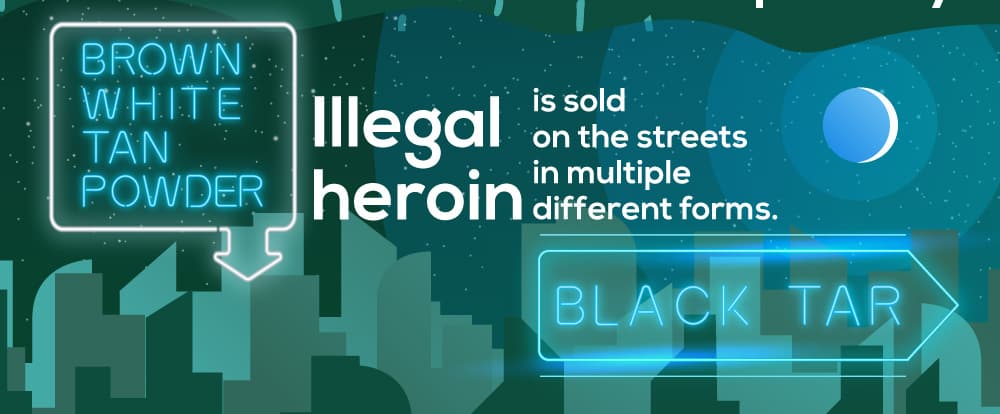
What Is Black Tar Heroin?
Heroin, in general, is an extremely powerful and physically addictive drug that is synthesized from morphine. Morphine is extracted from the seemingly harmless seeds of the opium poppy plant. These flowers are harvested and processed into morphine, typically in the form of a fine brown powder. Humans have been using the opium poppy for medicinal and recreational purposes for over 5000 years. It was documented that the ancient Sumerians were using the resin from the opium poppy. Ancient Greeks and Romans used opium to relieve pain. It was documented as a product transported on the Silk Road from Asia to Europe in medieval times. 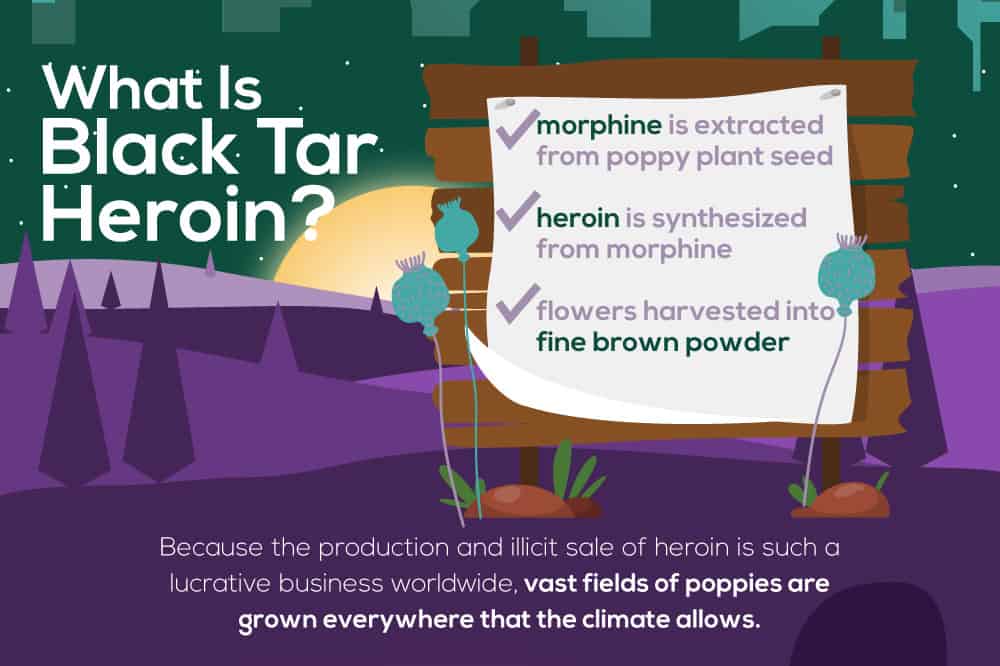 Because the production and illicit sale of heroin is such a lucrative business worldwide, vast fields of poppies are grown everywhere that the climate allows. This typically means that the majority of heroin comes from Southeast Asia, Southwest Asia, and Central and South America. We see most of the heroin imported into the United States originate from these regions.
Because the production and illicit sale of heroin is such a lucrative business worldwide, vast fields of poppies are grown everywhere that the climate allows. This typically means that the majority of heroin comes from Southeast Asia, Southwest Asia, and Central and South America. We see most of the heroin imported into the United States originate from these regions. 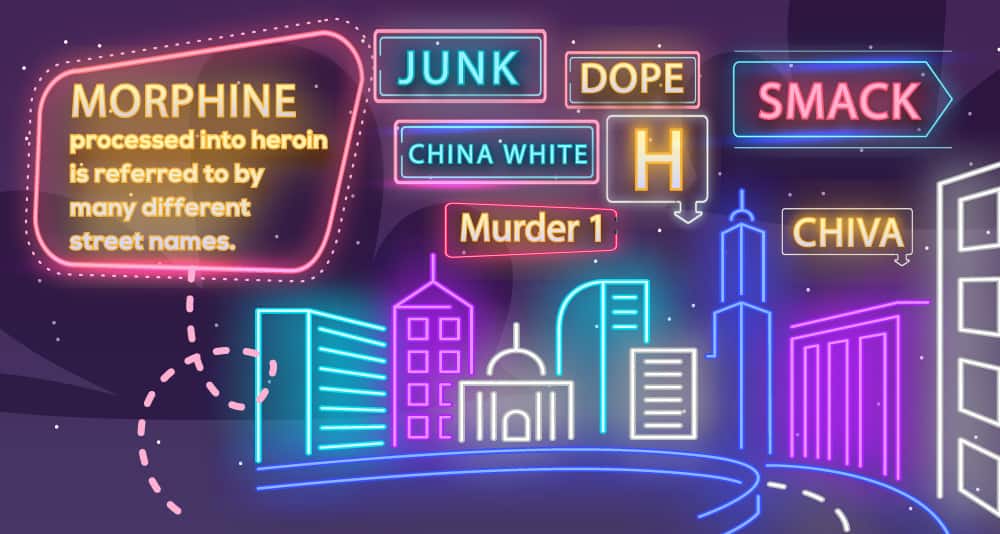 Once morphine is processed into heroin, it is referred to by many different street names. Some of these names include
Once morphine is processed into heroin, it is referred to by many different street names. Some of these names include
- “Junk”
- “Dope”
- “Smack”
- “Murder 1”
- “H”
- “China White”
- “Chiva”
People who use heroin also frequently use the term “chasing the dragon.” This term to refers to the act of heating the heroin and inhaling the resulting smoke through a straw or similar instrument. Many of these street names are simply regional or colloquial slang, but sometimes they refer to the different forms in which the drug can be sold. Most commonly, the drug is sold as a white, tan, or brown powder. This pure powdered heroin is often mixed with inert substances that stretch the volume of the powder for increased profit. This process is commonly known as “cutting” the drug. Some of the inert substances that are often used include powdered vitamins, baby powder, or cornstarch. As is the case with any illicit and unregulated street drug, the user has no way of knowing what potentially hazardous product that the heroin is cut with. In recent years, the influx of fentanyl as a street drug has added even more danger to illicit heroin use. Fentanyl is a synthetic opioid drug that is found to be 80 to 100 times more potent than heroin. Heroin is often laced with fentanyl in order to be sold as a super-potent form of the drug. Because it takes such a little amount of fentanyl to overdose, potentially-laced heroin has become a major issue in the United States. 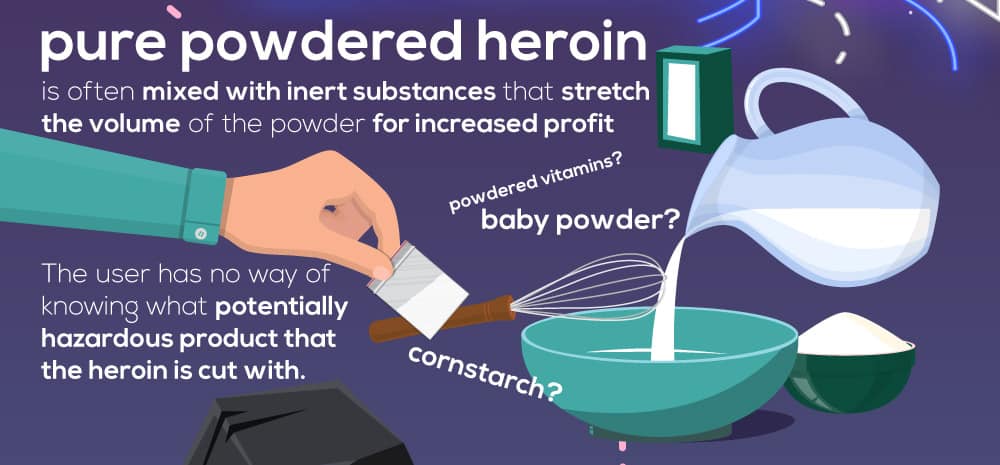 Some heroin is processed into a dark, sticky substance known as “black tar” heroin. This type of heroin is generally believed to be even lower in purity than any other form. Purity is desirable for users because the more pure the drug is, the more powerful the intoxicating effect.
Some heroin is processed into a dark, sticky substance known as “black tar” heroin. This type of heroin is generally believed to be even lower in purity than any other form. Purity is desirable for users because the more pure the drug is, the more powerful the intoxicating effect. 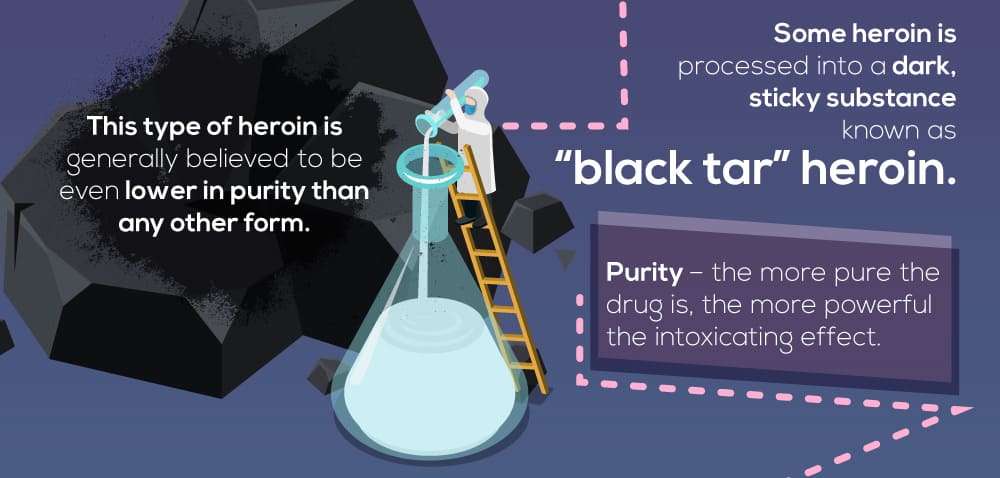
What Makes Black Tar Heroin Different?
As discussed above, all heroin is derived from powdered morphine. As far as physical appearance goes, it is very easy to distinguish black tar heroin from any other form of heroin. As its name suggests, black tar heroin is a dark brown or black, sticky substance that resembles roofing tar. While heroin can originate from any climate that allows for the growth of opium poppies, black tar heroin is primarily produced in Mexico. According to the National Institute of Health (NIH), the influx of black tar heroin along the West Coast and throughout the country is due to smuggling of the drug through the southern borders of Texas and California. Mexican drug cartels began to spread the black tar form of heroin throughout the West Coast and eventually across the rest of the United States. The purity of black tar heroin is generally agreed to be between 25-30%, making it a much cheaper option than some of its higher-purity counterparts. This does not mean that it is safer to use, however.  This leaves 70-75% of the drug consisting of different additives and toxic contaminants.
This leaves 70-75% of the drug consisting of different additives and toxic contaminants.
Health Risks of Using Black Tar Heroin
Consuming a drug referred to as “tar” can have just as many dangerous effects on the human body as the name suggests. The consistency is such that, when used intravenously (IV), it can clog up needles—and even blood vessels—leading to the risk of damaging the liver, brain, kidneys, and lungs. Because of the sticky consistency, there are some health risks involved with this type of heroin specifically. Some of these risks include
- Venous sclerosis (a hardening of the blood vessels)
- Skin abscesses (infections at the injection site)
- Tetanus
- Gangrene and necrotizing fasciitis
- Wound botulism
- Overdose and death
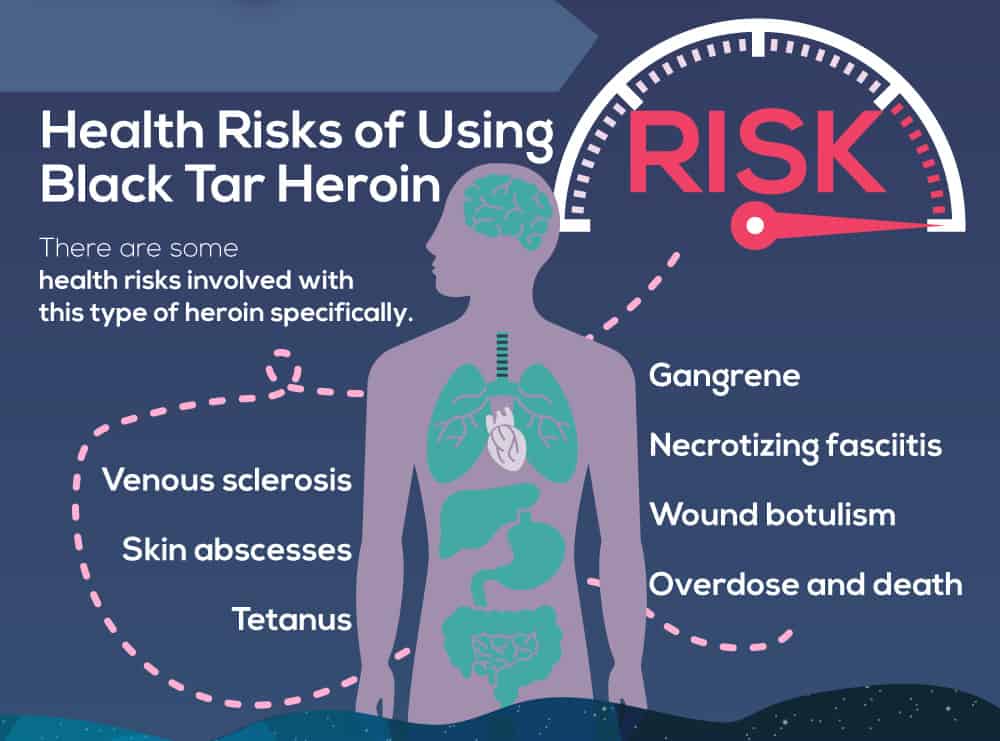
Effects of Black Tar Heroin
Users of this form of heroin must be particularly careful when preparing the drug for intravenous use. The drug must be heated, mixed with water, and thoroughly dissolved to lower the risk of creating clogs in the blood vessels. The effects of black tar heroin are the same as other types of heroin. These effects include
- An instant rush of euphoria or a “high” in the user that may include elevated mood or energy
- The flushed or reddening appearance of skin that may also be paired with increased temperature and sweating
- Severe itching due to heroin’s effects on nerve endings which may eventually lead to complications with wounds, lesions, or infection
- Dry mouth due to lack of saliva production
- Shivering or cold flashes in users
- Reduced mental awareness or general fogginess
- A sharp decrease in motor skills
- Slowed breathing, often to a dangerous extent that suggests heroin overdose
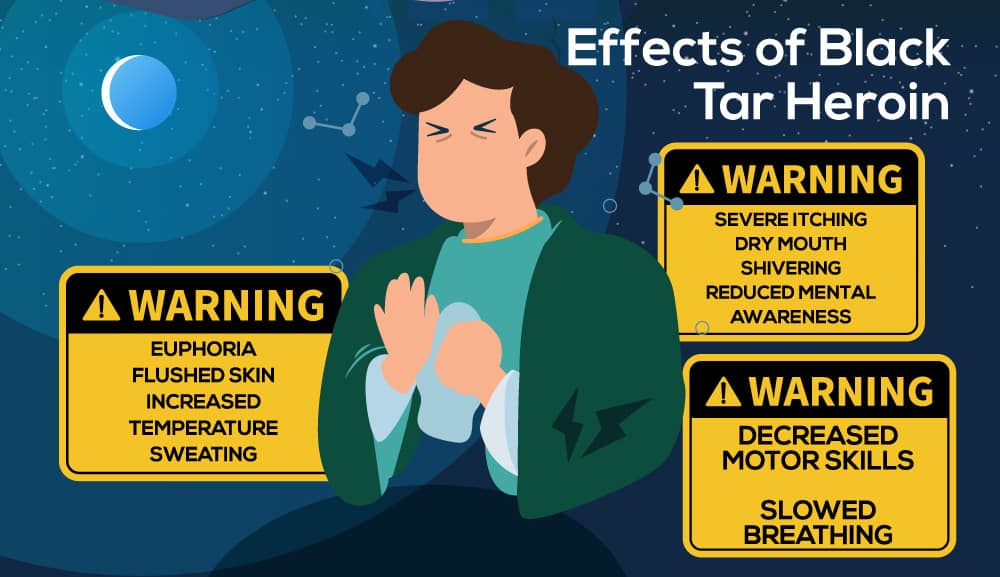 When a person takes heroin, the drug attaches to opioid receptors in the brain that are responsible for feeling pain, physical pleasure, and reward. The drug hijacks and overwhelms these systems, leading to the desirable effects that are sought. Some of these same receptors are also responsible for important vital functions such as breathing and blood pressure. Affecting these receptors can lead to dire consequences—and even death.
When a person takes heroin, the drug attaches to opioid receptors in the brain that are responsible for feeling pain, physical pleasure, and reward. The drug hijacks and overwhelms these systems, leading to the desirable effects that are sought. Some of these same receptors are also responsible for important vital functions such as breathing and blood pressure. Affecting these receptors can lead to dire consequences—and even death.
Black Tar Heroin Detox
As with any intoxicant drug, the body begins to build a tolerance after repeated use. After an extended period of heroin use, the body will become accustomed to the influx of the drug leading to physical addiction. If that person tries to abruptly stop using heroin, they may experience symptoms of withdrawal that are both distressing and uncomfortable. These symptoms can range from mild to severe, and while they can be extremely uncomfortable, they are not generally seen as life-threatening. Some of these symptoms may include
- Abdominal cramps
- Hypertension and rapid heart rate
- Diarrhea and vomiting
- Agitation and irritability
- Restlessness
- Tremors and goosebumps
- Fatigue
- Anxiety and depression
- Nausea
- Impaired breathing and muscle spasms
- Difficulty feeling positive feelings or pleasure
- Extreme cravings for the drug
Stopping the use of heroin on one’s own is extremely dangerous because of the risk of relapsing and overdosing. Many people stop using this drug without professional help, but then they cannot make it through withdrawals. They go back to using to get some relief but do not realize that their tolerance levels have changed. As a result, the amount they use is too much for them, and they overdose. That is why it is highly recommended that users seek professional treatment for heroin. 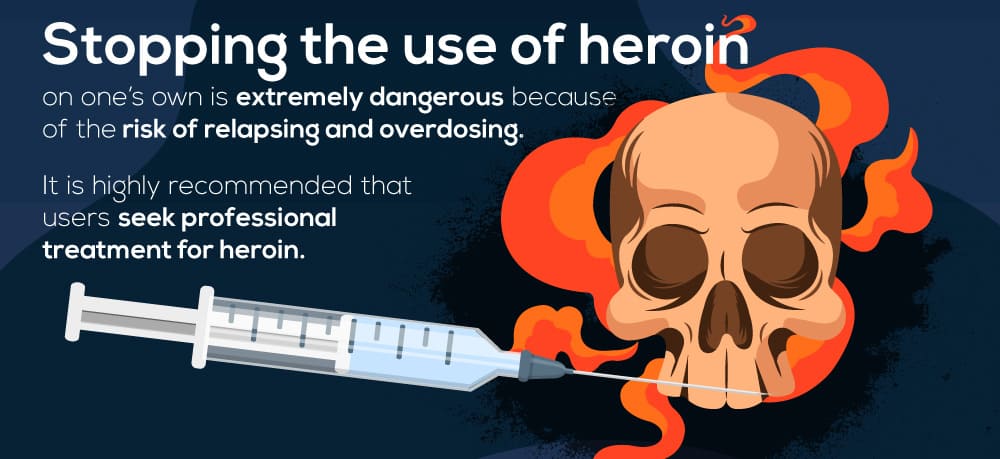
Our Outpatient Heroin Treatment Program in Washington State
At Northpoint Northpoint Seattle, we have one of the best outpatient treatment programs for heroin addiction in the state of Washington. At our facility in Seattle, Washington, our goal is to provide our clients with all the support they need to be successful. We have three levels of care, which helps us to more adequately meet our clients’ needs. We offer partial hospitalization, intensive outpatient treatment, and traditional rehabilitation. Many of our clients start with the highest level of care and then transition down over time. Do you have questions about heroin use or addiction? Would you like to know more about your treatment options? Please contact us at 425.414.3530.  To help you better understand the complex issue of heroin addiction and the risks of black tar heroin in particular, we’ve compiled a list of frequently asked questions:
To help you better understand the complex issue of heroin addiction and the risks of black tar heroin in particular, we’ve compiled a list of frequently asked questions:
- What does black tar heroin smell like?
Because of the impure nature of black tar heroin, the odor of it can vary greatly. Black tar heroin is composed of up to 75% contaminants, both bacterial and chemical. It is said to have a strongly acidic smell, very similar to vinegar.
- What is black tar heroin?
Black tar heroin is a particularly impure form of heroin that often originates from Central America, mainly Mexico. As the name suggests, it is a black and sticky substance that smells of vinegar and closely resembles roofing tar.
- What does black tar heroin look like?
As the name suggests, it is a black and sticky substance that smells of vinegar and closely resembles roofing tar. This is in stark contrast to other forms of heroin that are sold as a white, brown, or tan powder.
What Did you Think About This Blog?
Give it a Rating!
